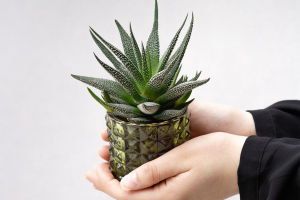What if every time we step onto our balcony, we are greeted by the fresh scent of basil, the sight of juicy cherry tomatoes, and the gentle rustle of mint leaves? An edible balcony garden makes this dream possible.
It’s more than just decoration—it’s a practical way for us to enjoy homegrown food even in the smallest spaces. With smart design, sunlight, and a little care, our balcony can transform into a mini green paradise.
Why Choose an Edible Balcony Garden?
We often think we need a big backyard to grow food, but that’s not true. Balconies can be turned into productive gardens that save money, add beauty, and give us fresh, chemical-free ingredients. Imagine not needing to run to the store for herbs when we’re cooking—just stretch out our hand and pick what we need. Plus, these gardens improve air quality and bring us closer to nature, which can reduce stress after a busy day.
Getting the Basics Right
Sunlight is the first thing we must consider. Most herbs and vegetables need at least 5–6 hours of direct sun. If our balcony faces south or west, we’re in luck, but if not, we can choose shade-tolerant plants like lettuce, spinach, or parsley. Containers with good drainage are also key—clay or wooden boxes work well. For watering, it’s best to keep soil slightly moist without letting it flood, especially during hot summer days.
Best Plants for Balcony Gardens
We don’t need a farm to enjoy variety. Here are some easy and rewarding choices:
- Herbs: basil, mint, rosemary, thyme, chives, and cilantro. They grow quickly and are useful in daily cooking.
- Vegetables: cherry tomatoes, bell peppers, radishes, lettuce, and spinach. Compact and colorful, they thrive in small containers.
- Climbing plants: beans or cucumbers can be grown with a trellis against the balcony wall, adding vertical greenery.
- Edible flowers: nasturtiums and pansies not only brighten the balcony but also add flavor to salads.
Creative Space-Saving Ideas
Even with limited space, we can make the most of it:
- Vertical shelves: stack planters upwards like a green tower.
- Hanging baskets: perfect for trailing herbs such as thyme or strawberries.
- Rail planters: use balcony rails to grow lettuce or small peppers.
- Tiered stands: arrange containers at different heights for both beauty and easy access.
This way, every inch of the balcony works hard to give us fresh food.
Seasonal Care and Harvest
To keep the garden productive all year, we should rotate crops. In spring, leafy greens like lettuce thrive; in summer, tomatoes and basil shine; in autumn, carrots and radishes grow well; and in winter, hardy herbs like rosemary keep going strong. Regular harvesting is also important—picking leaves often encourages new growth. It’s a cycle of giving and receiving: the more we care, the more the garden rewards us.
Benefits Beyond Food
An edible balcony garden is not just about eating. It brings relaxation, teaches us patience, and connects us to nature even in the middle of a busy city. Watching a seed sprout or enjoying the scent of lavender in the evening breeze reminds us that simple joys are often the most meaningful. Plus, guests will be impressed when we serve dishes with ingredients picked right from our own balcony.
Balcony Bliss
Lykkers, an edible balcony garden is proof that small spaces can create big joys. It doesn’t require much—just sunlight, a few containers, and our willingness to try. Step by step, our balconies can transform into colorful, tasty, and life-giving corners. Let’s start with something simple, like a planter of basil or a hanging basket of strawberries, and watch how our daily lives become fresher and more connected to nature.
So, Lykkers, if you had to start today, which plant would you grow first on your balcony?


